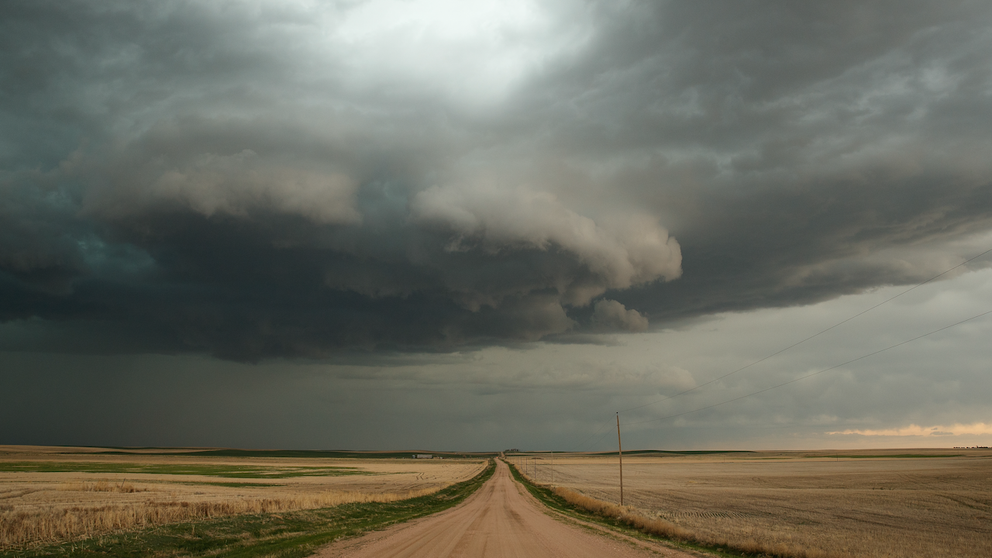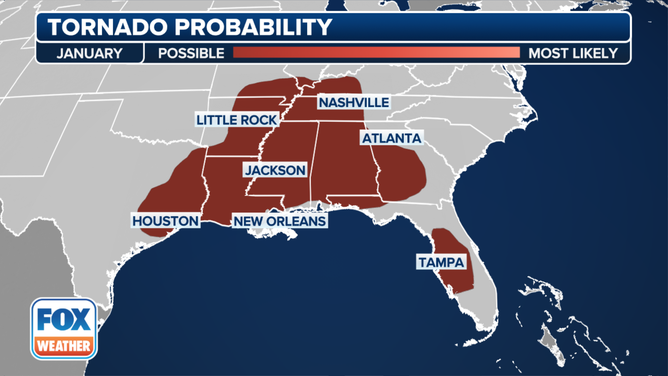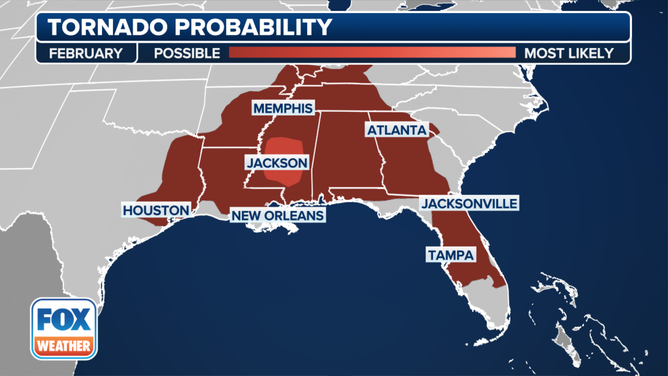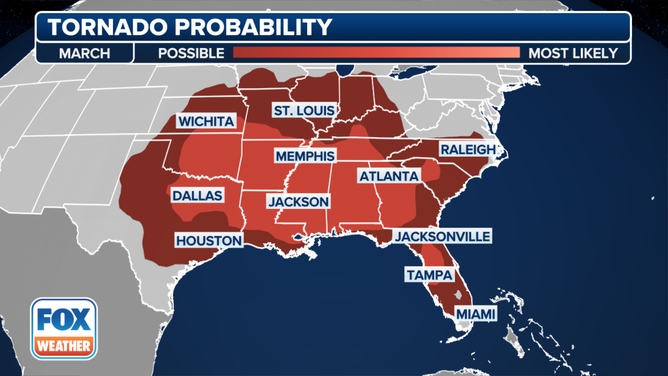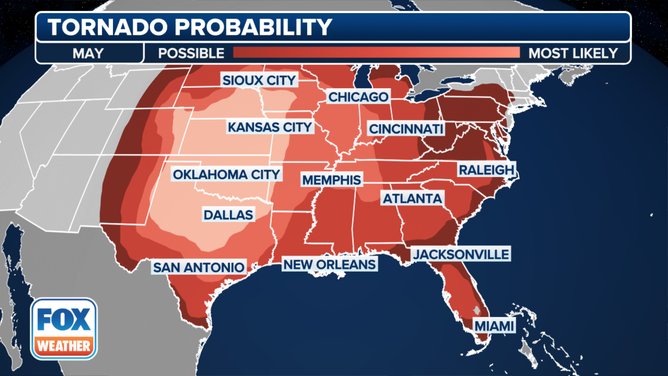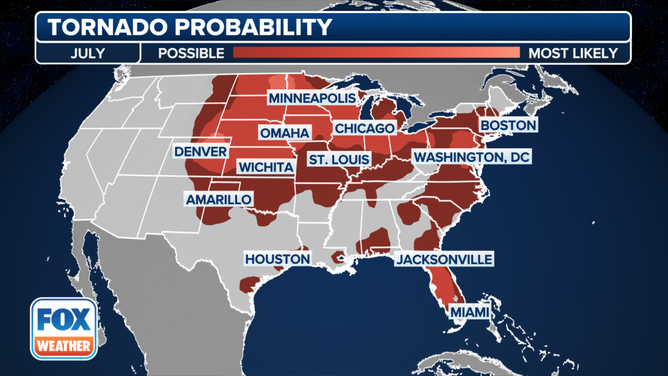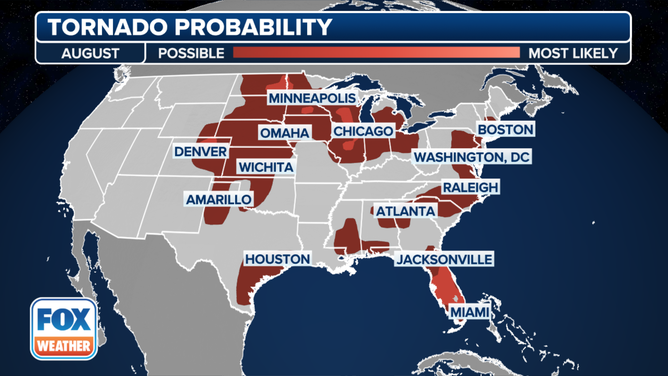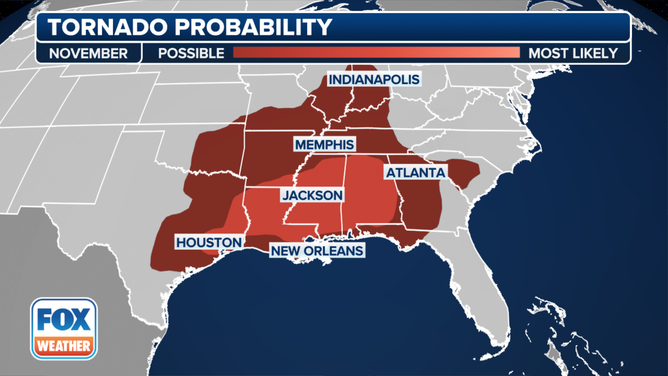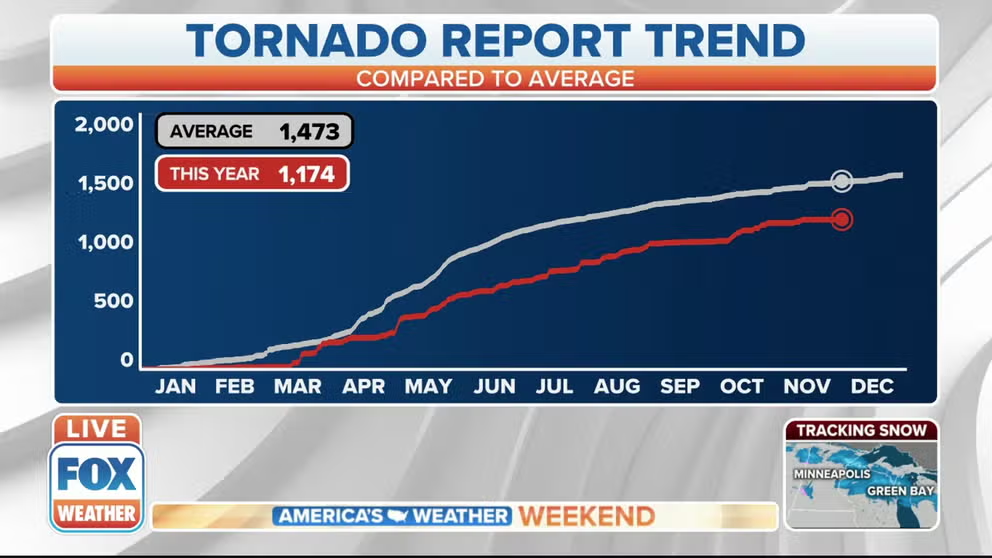Here's where tornadoes are most likely to occur in each month
The areas most vulnerable to tornadoes change throughout the year as the jet stream migrates north and south.
Here is where tornadoes are most likely to occur in each month
In the U.S., a tornado can happen any time and anywhere. However, depending on the time of year, there are areas that are more at risk than others.
While spring has the most notorious reputation for severe thunderstorms and destructive tornadoes, a twister can spin up somewhere in the U.S. during any month. But the areas most vulnerable to tornadoes change throughout the year as the jet stream migrates north and south.
Applying a statistical analysis to the locations and frequencies of confirmed tornadoes in the U.S. since 1950, Shane Brown, senior weather data specialist at FOX Weather, compiled the series of maps below illustrating the areas most susceptible to twisters in each month.
During the winter months, when much of the nation is shivering in cold temperatures, you'll notice there's still a decent probability of tornadoes in parts of the South. That's because the jet stream sets up camp in the southern U.S. for the winter, causing a sharp temperature contrast between cold air to the north – originating from Canada – and warm air to the south pulled in from the Gulf of Mexico.
HOW ARE TORNADOES RATED? THE ENHANCED FUJITA SCALE EXPLAINED
The jet stream is also at its strongest in the winter because of that clash of air masses. A stronger jet stream can be fuel for severe weather, adding the spin and energy needed in the atmosphere for thunderstorms to grow and intensify, possibly leading to the formation of tornadoes. Wintertime severe storms are often found where there’s a southward dip in the jet stream – called a trough – or a cold front moving through a region.
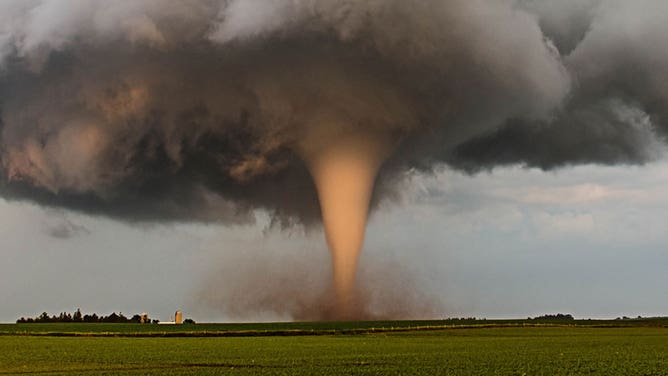
A tornado churns up dust in the sunset light near Traer, Iowa.
(Brad Goddard / NOAA)
By the spring, the jet stream remains quite strong as it begins its northward migration. This causes the threat of tornadoes to also spread farther north as we progress through March, April and May.
Temperatures in the 80s and 90s can penetrate northward into much of the Plains and Midwest, including "Tornado Alley," by April. The warmth is often accompanied by dew points in the 60s or 70s, indicative of a humid air mass that can supply fuel for severe thunderstorms and tornadoes.
WHERE ARE TORNADOES MOST COMMON?
May is historically the most active month for tornadoes, averaging 294 twisters each year. That's followed by April and June, each with an average of 212 tornadoes.
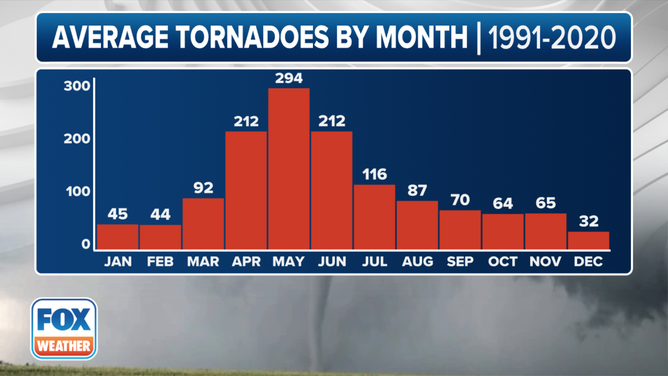
Average tornadoes by month.
(FOX Weather)
In the summer, the jet stream is typically parked near the U.S.-Canada border, which causes the tornado threat to increase for parts of the northern and central Plains and the Midwest during July and August. Summer is also the most favorable time of year for twisters in the Northeast and mid-Atlantic states.
Given the amount of heat and humidity available, a tornado can form virtually anywhere during the warmest months.
A secondary peak in tornadoes often occurs in the fall, especially in the Gulf Coast region. This is because the jet stream starts to retreat southward and strengthen as the atmosphere transitions from summer to winter.
However, severe weather from autumn into early winter can sometimes penetrate northward into the Ohio Valley and southern Great Lakes, as we saw in December 2021 when a massive EF-4 twister tore a nearly 166-mile-long path of destruction across western Kentucky.
FALL IS THE SECOND SEVERE WEATHER SEASON
Climatologically, by November and December, the primary tornado threat is confined to the South, where temperatures and humidity typically remain higher due to the influence of the Gulf of Mexico.
Any late-season tropical activity can also increase severe weather along the Gulf Coast in November and December.
'Second' tornado season can cause problems in December
Many people let their guard down in December thinking it's not the season for severe weather and tornadoes, but in reality it's all about the atmospheric conditions.
